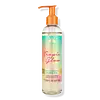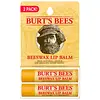What's inside
What's inside
 Key Ingredients
Key Ingredients

 Benefits
Benefits

 Concerns
Concerns

 Ingredients Side-by-side
Ingredients Side-by-side

Water
Skin ConditioningPolysorbate 20
EmulsifyingPolyquaternium-10
Glycereth-26
HumectantGlycerin
HumectantParfum
MaskingPhenoxyethanol
PreservativeHydroxyacetophenone
AntioxidantAllantoin
Skin ConditioningSodium Chloride
MaskingPistacia Vera Seed Oil
Skin ConditioningSimmondsia Chinensis Seed Oil
EmollientArgania Spinosa Kernel Oil
EmollientTheobroma Grandiflorum Seed Butter
Skin ConditioningTocopheryl Acetate
AntioxidantBenzyl Salicylate
PerfumingBenzyl Alcohol
PerfumingLimonene
PerfumingWater, Polysorbate 20, Polyquaternium-10, Glycereth-26, Glycerin, Parfum, Phenoxyethanol, Hydroxyacetophenone, Allantoin, Sodium Chloride, Pistacia Vera Seed Oil, Simmondsia Chinensis Seed Oil, Argania Spinosa Kernel Oil, Theobroma Grandiflorum Seed Butter, Tocopheryl Acetate, Benzyl Salicylate, Benzyl Alcohol, Limonene
 Reviews
Reviews

Ingredients Explained
These ingredients are found in both products.
Ingredients higher up in an ingredient list are typically present in a larger amount.
Limonene is a fragrance that adds scent and taste to a formulation.
It's found in the peel oil of citrus fruits and other plants such as lavender and eucalyptus. The scent of limonene is generally described as "sweet citrus".
Limonene acts as an antioxidant, meaning it helps neutralize free radicals.
When exposed to air, oxidized limonene may sensitize the skin. Because of this, limonene is often avoided by people with sensitive skin.
The term 'fragrance' is not regulated in many countries. In many cases, it is up to the brand to define this term. For instance, many brands choose to label themselves as "fragrance-free" because they are not using synthetic fragrances. However, their products may still contain ingredients such as essential oils that are considered a fragrance.
Learn more about Limonene